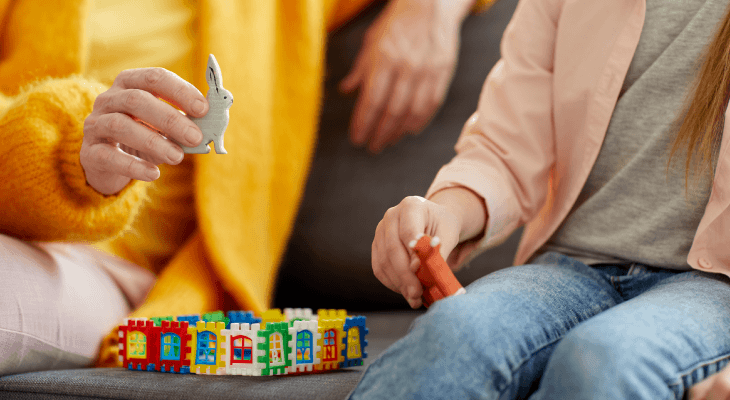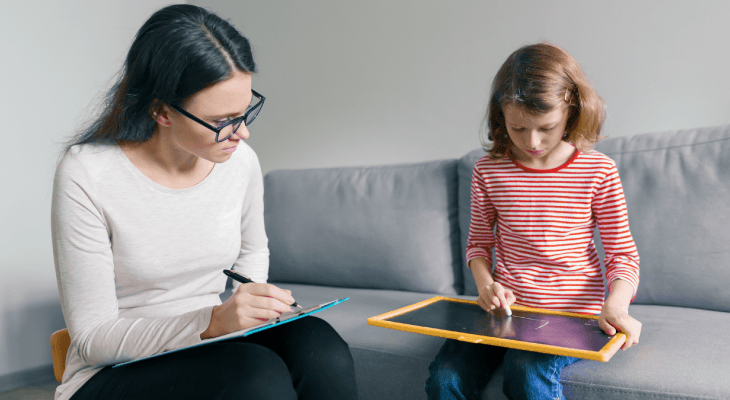5 Fascinating Types of Therapy That Don’t Require Talking
Planning to become a psychologist? Bet you haven’t heard of these unconventional approaches to therapy! Read more here.
Updated 25 May 2022

What do you think about when the word “therapy” comes to mind?
Do you imagine yourself sitting on a long couch and crying your face off, talking about your childhood? Is your therapist sitting solemnly across from you taking down notes with a clipboard in hand?
Well, therapy is certainly that — but there are other forms of therapy to help relieve emotional distress. In fact, some don’t even require you to talk. Here are some fascinating forms of therapy people are engaging in for better mental health.

Asia Pacific University of Technology & Innovation (APU)
Bachelor of Science (Honours) in Psychology
✓Dual-award degree – one from De Montfort University (UK) and one from APU
#1. Sandplay therapy

You may think that building sandcastles is strictly for days at the beach but psychologists are using this art of imagination to help patients express their inner thoughts and concerns.
Developed by psychologist Dora Kalf in the 1950s, sandplay therapy is a non-verbal therapy that is often used on patients who have experienced trauma, abuse or neglect. While it’s commonly used with children who can’t express their feelings in words, this method is also helpful for teens and adults who struggle to express themselves.
The therapy takes place in a sand tray alongside other miniature figurines that represent the real people and experiences they face in their lives. The therapist will then observe the choice and arrangement of toys and allow the patient to seek answers within themselves. Once completed, both the patient and therapist will discuss and analyse the arrangements and look for metaphorical meanings behind it.

#2. Puppet therapy

After a series of horror films like Annabelle or Chucky, puppets and dolls may seem like the type of toys you just shouldn’t mess with! Yet, the use of puppets in therapy is considered to be a popular technique to treat children worldwide.
Developed by puppeteer and occupational therapist Ingrid Lagerqvist in the 1950s, puppet therapy is used on children who have experienced abuse, emotional trauma, family conflicts or serious illness. Using the puppets to represent the people in their lives and the actions they do, children are able to communicate their feelings, understand difficult situations better and solve problems in a positive way.
Children can be a tough nut to crack, especially when it involves expressing feelings they don’t understand. Consequently, therapists would either allow the child to play freely and resolve their own issues given the right conditions or be actively involved by giving inputs and encouragement to express their feelings.
Apply for university with EduAdvisor
Secure scholarships and more when you apply to any of our 100+ partner universities.
Start now#3. Sound healing therapy

Do you have a go-to song whenever you need a pick-me-up? Whether you’re a fan of Beyoncé or Skrillex, there’s no denying that music does wonders. And that’s what sound healing therapy is about.
Essentially, sound healing therapy is an ancient wellness practice that guides you in a deep meditative state while you're enveloped in ambient sounds such as Tibetan singing bowls, cymbals or gongs (in other words, bathing you in sound; hence, the term “sound bath”). In fact, studies have shown that sound baths can help decrease blood pressure too!
So, how does it work? Picture a professional napping set-up with pillows, blankets and a mat for you to lie on (okay so, heaven?). The first few minutes will include breath work before you are bathed in sound as you go into a meditative state. By focusing on the rhythm, vibration and harmonic sound, you will soon feel the tension and anxiety ease away.

Asia Pacific University of Technology & Innovation (APU)
Bachelor of Science (Honours) in Psychology
✓Dual-award degree – one from De Montfort University (UK) and one from APU
#4. Art therapy

Can’t seem to put words to how you’re feeling? With art therapy, you can draw, paint, colour or sculpt your feelings out!
Adrian Hill, a British art therapist, coined the term in 1942 when he found that drawing and painting helped his recovery with tuberculosis. Since then, art therapy has evolved and is used to help therapists understand their patients’ feelings better by identifying non-verbal messages and metaphors found in their art.
Art therapists are trained in identifying the role of colours, textures and various media used and how they translate to a person's thoughts and emotions. As part of the process, the therapist will observe the patient creating some form of artwork, asking questions to unravel thoughts and memories. Art therapy can be used on all age ranges and aims to explore emotions, improve self-esteem as well as decrease levels of anxiety and depression.
PRO TIP
A career in therapy can be an incredibly rewarding job for someone who likes to interact with and help people. If you're interested in being a therapist, pursue a psychology degree!

#5. Pet therapy

Pets are a great source of comfort and companionship. But did you know that they are also gifted to make you feel emotionally and mentally better?
Pet therapy, or animal-assisted therapy, is an approach that uses dogs and other animals to help people better cope with problems. In fact, psychologists believe that pets give us the same warm and fuzzy feeling that friends do! The act of stroking, petting or hugging pets can fulfil our psychological need for touch which helps in easing stress and anxiety. Plus, their companionship can reduce feelings of loneliness too.
The process of pet therapy typically involves the dog and its handler enter a therapy session for a few minutes under the direction of the therapist. Patients are invited to interact with the dog and its handler before the therapy session begins. Having a pet in the room often makes patients less anxious and more likely to open up about their feelings.
Even though pet therapy has proven to be successful at calming patients, this method is a complementary therapy that’s usually accompanied by another technique to improve a person’s well-being.
Contrary to popular belief, not all therapy requires talking, and these are just a few non-verbal approaches that are proven to help people cope with emotional issues. Whether you’re an aspiring psychologist or someone curious to know more about therapy, it’s important to remember that there are many ways to get help!






